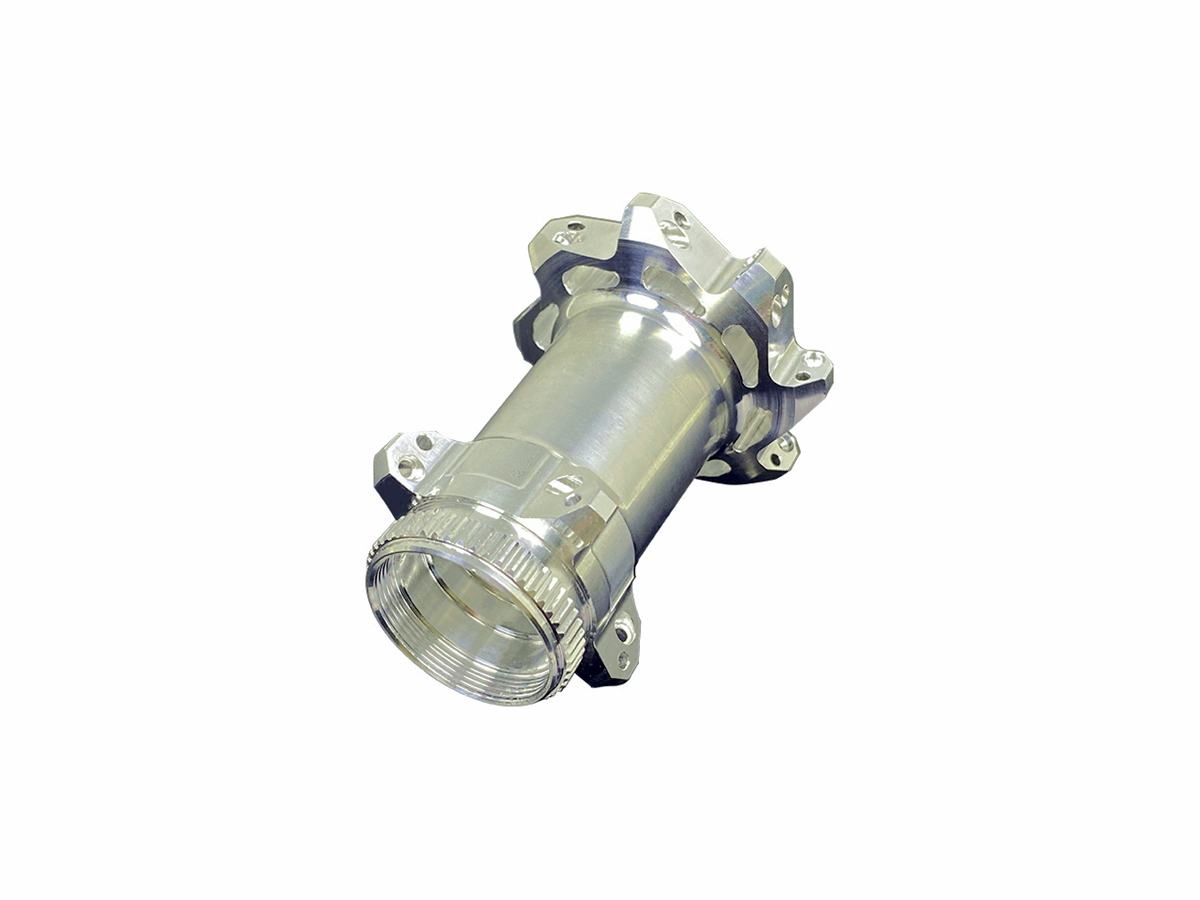Exploring the Strength and Durability of Ti-6al-4v-the-Titanium Alloy for Aerospace CNC Machining
Introduction
The aerospace industry demands materials offering superior strength, durability, and low weight. Ti-6Al-4V, commonly known as Grade 5 titanium, provides exceptional strength-to-weight ratios, corrosion resistance, and fatigue strength, making it an optimal choice for critical aerospace applications, including aircraft structural components, landing gears, engine components, and fasteners.
Advanced CNC machining processes precisely shape Ti-6Al-4V components to meet rigorous aerospace standards. Precision machining ensures intricate geometries, strict tolerances, and outstanding surface finishes, significantly enhancing part durability, reducing aircraft weight, and improving overall aerospace system performance.
Ti-6Al-4V Material for Aerospace Applications
Material Performance Comparison
Material | Tensile Strength (MPa) | Yield Strength (MPa) | Density (g/cm³) | Typical Applications | Advantage |
|---|---|---|---|---|---|
950-1100 | 880-950 | 4.43 | Landing gear, structural frames, engine parts | Exceptional strength-to-weight, high fatigue resistance | |
860-965 | 795-895 | 4.43 | Aerospace fasteners, precision medical implants | Enhanced fracture toughness, excellent biocompatibility | |
620-780 | 483-655 | 4.48 | Hydraulic tubing, aerospace fittings | Excellent formability, strong corrosion resistance | |
1200-1300 | 1100-1200 | 4.65 | High-strength engine components | Superior strength, excellent thermal stability |
Material Selection Strategy
Selecting the optimal titanium alloy for aerospace applications involves carefully evaluating strength requirements, weight constraints, and durability:
Structural aerospace components and critical engine parts requiring high tensile strength (up to 1100 MPa), excellent fatigue resistance, and low density (4.43 g/cm³) choose Ti-6Al-4V (Grade 5) to maximize structural efficiency.
Fasteners and precision aerospace components requiring enhanced fracture toughness, high strength (965 MPa tensile), and superior biocompatibility benefit from Ti-6Al-4V ELI (Grade 23), providing excellent reliability and safety.
Hydraulic tubing and aerospace fittings needing high corrosion resistance, formability, and moderate strength (up to 780 MPa tensile) are optimally produced from Ti-3Al-2.5V (Grade 12), ensuring lightweight, reliable performance.
Critical high-strength engine components operating under extreme mechanical stresses (up to 1300 MPa tensile) utilize Ti5553 for superior mechanical performance, thermal stability, and durability.
CNC Machining Processes
Process Performance Comparison
CNC Machining Technology | Dimensional Accuracy (mm) | Surface Roughness (Ra μm) | Typical Applications | Key Advantages |
|---|---|---|---|---|
±0.02 | 1.6-3.2 | Basic structural brackets, mounts | Cost-effective, consistent quality | |
±0.015 | 0.8-1.6 | Rotational parts, engine components | Improved accuracy, fewer setups | |
±0.005 | 0.4-0.8 | Complex aerospace components, turbine blades | Superior precision, high-quality surfaces | |
±0.003-0.01 | 0.2-0.6 | Micro-components, precision valves | Maximum precision, intricate geometries |
Process Selection Strategy
Selecting the appropriate CNC machining process for aerospace Ti-6Al-4V components depends on complexity, precision requirements, and application criticality:
Simple structural brackets, mounts, and basic aerospace components requiring standard precision (±0.02 mm) benefit from 3 Axis CNC Milling, providing reliable quality at economical rates.
Rotational engine components, moderate complexity fittings, and specialized brackets needing improved precision (±0.015 mm) are ideally machined with 4 Axis CNC Milling, enhancing accuracy while reducing machining setups.
Complex aerospace components such as turbine blades, detailed structural parts, and precision-engineered components demanding tight tolerances (±0.005 mm) and optimal finishes (Ra ≤0.8 μm) utilize 5 Axis CNC Milling, significantly improving performance and reliability.
Micro-components, precision valves, and critical aerospace components requiring extreme dimensional accuracy (±0.003 mm) leverage Precision Multi-Axis CNC Machining, ensuring maximum component reliability and safety.
Surface Treatment
Surface Treatment Performance
Treatment Method | Corrosion Resistance | Wear Resistance | Max Operating Temp (°C) | Typical Applications | Key Features |
|---|---|---|---|---|---|
Excellent (≥800 hrs ASTM B117) | Moderate-High | Up to 400 | Structural aerospace parts, fasteners | Durable protective coating, improved aesthetics | |
Exceptional (>1000 hrs ASTM B117) | High (HV1000-1200) | Up to 1150 | Engine components, turbine blades | Excellent thermal insulation, prolonged lifespan | |
Outstanding (>1000 hrs ASTM B117) | Very High (HV1500-2500) | Up to 600 | Wear-critical aerospace components | Extreme hardness, reduced friction | |
Excellent (≥1000 hrs ASTM B117) | Moderate | Up to 400 | Aerospace fittings, brackets | Superior corrosion resistance, surface purity |
Surface Treatment Selection
Selecting the correct surface treatment for aerospace titanium components involves considering operational demands, corrosion risks, and wear conditions:
Structural aerospace parts and fasteners requiring enhanced corrosion resistance, improved aesthetics, and durability choose Anodizing, optimizing part performance and longevity.
Engine components and turbine blades exposed to high temperatures (up to 1150°C) benefit significantly from Thermal Barrier Coatings (TBC), dramatically increasing component lifespan and thermal performance.
Aerospace components subject to high friction and wear, including precision valves and bearings, choose PVD Coating, significantly extending operational reliability through extreme hardness (HV1500-2500) and friction reduction.
Aerospace fittings and brackets needing excellent corrosion protection and surface purity select Passivation, ensuring reliable performance and extended service life.
Quality Control
Quality Control Procedures
Detailed dimensional inspections via Coordinate Measuring Machines (CMM) and optical comparators.
Surface roughness evaluation with precision profilometers.
Mechanical testing (tensile, yield, fatigue) according to ASTM standards.
Corrosion resistance testing (ASTM B117 Salt Spray Test).
Non-destructive testing (NDT) including ultrasonic and X-ray inspections.
Comprehensive documentation aligned with AS9100 and ISO 9001 aerospace standards.
Industry Applications
Ti-6Al-4V Aerospace Component Applications
Aircraft structural frames and landing gear components.
Engine components, including turbine blades and compressor parts.
Precision aerospace fasteners and mounting brackets.
Lightweight, high-strength hydraulic tubing and fittings.
Related FAQs:
Why is Ti-6Al-4V ideal for aerospace machining?
How does CNC machining enhance titanium aerospace components?
What aerospace applications benefit from Ti-6Al-4V alloy?
Which surface treatments improve Ti-6Al-4V durability?
What quality standards apply to aerospace titanium parts?

